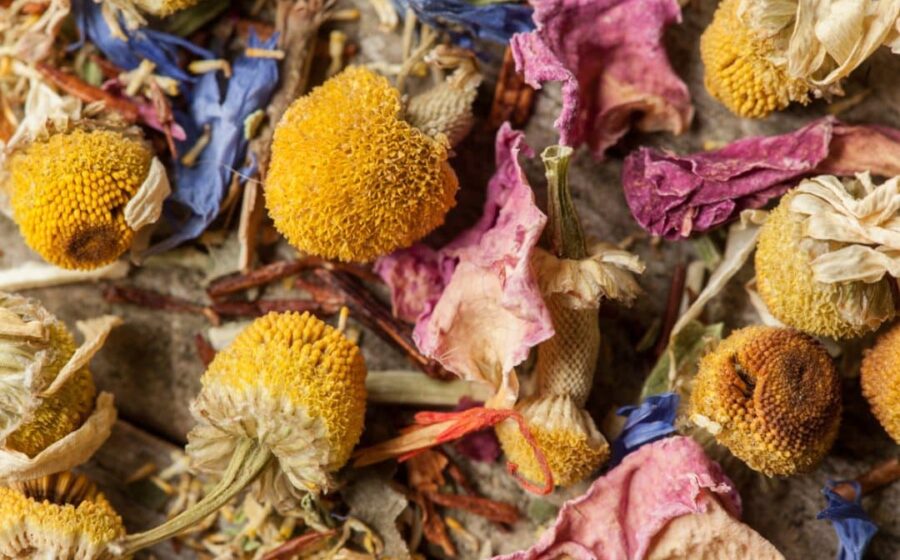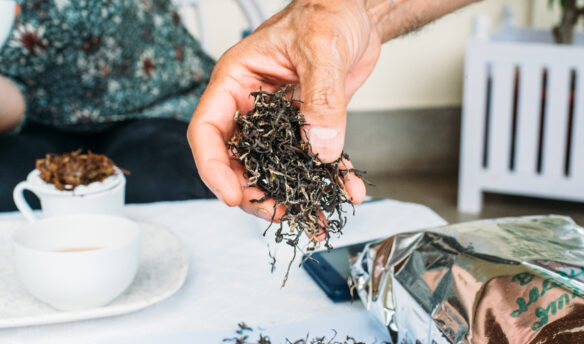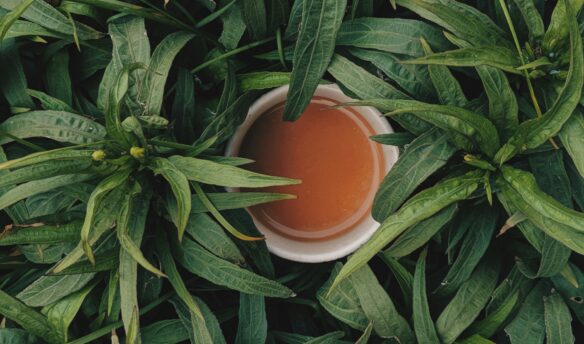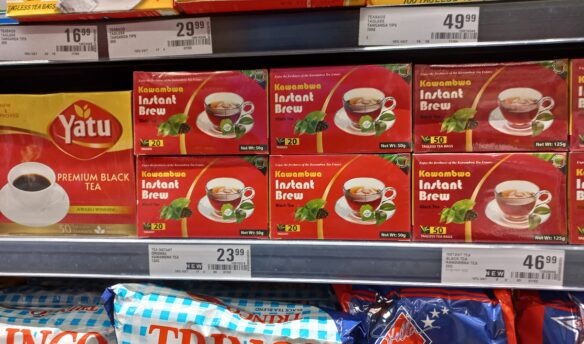[L]oose leaf tea—tea that has not been portioned into a tea bag or a sachet—is how tea has been prepared for thousands of years. At its core, brewing tea is a simple process that requires nothing but a vessel and hot water. This simplicity is one of many reasons why tea is the most prepared beverage on the planet. Making the perfect cup of tea is a subjective goal, but there are several factors and techniques that can greatly alter the finished beverage. In the 71 years since George Orwell published “A Nice Cup of Tea” in the London Evening Standard, our world of tea has changed quite dramatically, with more options, styles, flavors, and experiences than ever before.
The following parameters are set forth with all styles in mind, intended to guide discovery. Remember the best cup of tea is the one you enjoy most. Don’t be afraid to play around and experiment.
Know the leaf: Loose leaf tea does not mean full leaf tea. Many loose teas are small particles more similar to those found in old school tea bags or even in CTC (cut, torn, and curled) teas, the grape nut–like particle produced heavily in India, Africa, and beyond. Teas comprised of smaller sized particles have more surface area to interact with water, resulting in a stronger extraction. To compensate, you can adjust how much tea you use per cup, or the steep time.
Water and temperature: Use drinking water that has been purified to remove flavor and aromas. Water should be freshly drawn for the occasion. Temperature is a key point in extraction—use hotter water for bold, intense, and robust experiences, and cooler water for sweeter, softer, and more gentle experiences. Water should be 170–185 degrees Fahrenheit for green and white teas, 205–212 degrees Fahrenheit for blacks and herbals, and 190–200 for most oolongs.
Ratios: To start, use one teaspoon of full leaf tea per 8-to-10 ounces of water. If you are making a large pot of tea, you may want to add an extra spoonful—“one for the pot.” Adjust to suit your preferences: if the tea isn’t strong enough, add more.
Tea into Water, Water into Tea: Pouring water over tea leaves creates a more robust extraction because the leaves are agitated as the water hits them. For milder flavors, add leaves into hot water gently. A good rule of thumb is to bring water to tea for black teas, most oolongs, and herbal infusions. For white teas, green teas, and lighter oolongs, bring the tea to water.
Time: Traditionally, herbal infusions and black teas are steeped for 5 minutes. Green teas, white teas, and lighter offerings are steeped for 3 minutes. When teas are prepared in gongfu fashion, steeping times are much shorter.
Vessel: The best tea is made in a tea pot. While you can brew tea in a coffee cup, Pyrex dish, sauce pan, or an old tin can, it will not be the same. If you don’t have a tea pot, buy one! It’s a wise investment because your vessel affects the flavor and aroma of your tea. Porcelain and glass are the best options to brew a wide variety of tea experiences. Stoneware and clay are best for high-roasted oolongs and pu-erh teas.
—Tony Tellin is head teamaker at Smith Teamaker.















